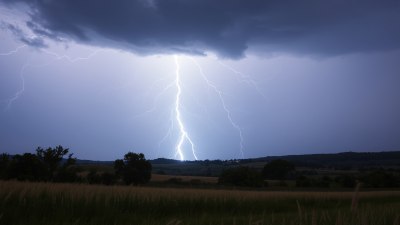Why Some Moods Arrive Like Lake Effect Snow: Out of Nowhere
Explore why some moods emerge suddenly and intensely, like lake effect snow, with insights into emotional triggers and brain mechanisms.

Emotions often flow like the seasons, predictable and gradual. Yet, sometimes our moods seem to arrive suddenly, unexpectedly, much like lake effect snow storms that appear out of nowhere. These abrupt shifts in feeling can catch us off guard, influencing our behavior, decision-making, and overall well-being. Understanding why certain moods strike with such intensity and unpredictability can help us manage our emotional lives better and cultivate resilience.
What Is Lake Effect Snow?
To comprehend why moods might behave like lake effect snow, it helps to understand the phenomenon itself. Lake effect snow occurs when cold, dry air passes over a large, warmer lake, picking up moisture and heat. As this air reaches the downwind shores, it cools and releases heavy, localized snow in narrow bands. These snow bursts can be intense and sudden, often occurring even when the surrounding areas remain snow-free. This phenomenon's key characteristics are its abrupt onset, intensity, and localized nature—traits we can metaphorically attribute to some emotional experiences.
The Suddenness of Emotional Shifts
Moods and emotions usually evolve gradually, influenced by ongoing events and thoughts. However, sudden emotional shifts can materialize with little warning, triggered by subtle or even hidden factors. Just as lake effect snow depends on specific atmospheric conditions, abrupt mood swings depend on complex interactions within the brain and body. Sometimes a phrase, a memory, or even a fleeting sensory input can ignite a powerful mood change. These lightning-quick transformations highlight the sensitivity and complexity of the human emotional system.
Role of the Brain's Emotional Centers
The limbic system, particularly structures like the amygdala, plays a crucial role in processing emotions. The amygdala helps us recognize emotional significance and react accordingly, sometimes before our conscious mind fully registers what happened. This rapid processing can explain sudden mood changes. When the amygdala activates intensely—whether due to a perceived threat or emotional cue—it can produce immediate feelings of fear, sadness, or anger. This activation resembles how cold air passing over a lake suddenly condenses moisture to create lake effect snow.
Triggers That Act Like Thermal Contrasts
In atmospheric terms, lake effect snow requires a significant temperature difference between the lake and the overlying air. Similarly, mood surges often stem from disparities between internal and external states. For example, someone feeling generally calm might encounter a surprising event that contrasts strongly with their mood baseline, triggering an intense reaction. These triggers can be sensory, cognitive, or social. A sudden loud noise, an unexpected comment, or an intrusive memory can create an emotional 'temperature gradient' that propels mood shifts.
The Impact of Sensory Inputs
Our senses continuously feed information to the brain, shaping our emotional landscape. Under ordinary conditions, the brain filters and integrates these inputs smoothly, maintaining emotional balance. However, certain sensory stimuli—like a sharp sound, a familiar scent, or a vivid image—can unexpectedly evoke strong memories or feelings. This sudden influx can overwhelm the brain's regulatory mechanisms, producing rapid mood changes. In this way, sensory inputs function like warm lake water feeding overnight snowfalls, sustaining or intensifying emotional reactions.
Underlying Psychological Vulnerabilities
Not all individuals experience sudden mood changes equally. Some may be more prone due to underlying psychological or neurological factors. For instance, people with mood disorders such as bipolar disorder or borderline personality disorder experience heightened emotional sensitivity and reactivity. Their brains may exhibit a lower threshold for activation or slower regulation by prefrontal areas responsible for impulse control. These vulnerabilities can make their mood shifts resemble highly localized, intense storms of emotion, paralleling the concentrated nature of lake effect snowbands.
Neurochemical Fluctuations and Mood
Neurotransmitters like serotonin, dopamine, and norepinephrine play crucial roles in mood regulation. Rapid fluctuations in these chemicals can destabilize emotional states, leading to unpredictable shifts. Stress, sleep deprivation, diet, or hormonal changes can cause these neurochemical waves, sometimes unexpectedly. Such fluctuations mirror the dynamic environment of lake effect snow formation where minor variations in temperature and moisture can trigger big changes in snowfall. Understanding and balancing these neurochemical factors are essential for emotional stability.
Cognitive Interpretations Shape Emotional Responses
Our thoughts frame how we perceive and react to situations, shaping emotional responses. Even small reinterpretations can cause a sudden shift in mood. For example, viewing a neutral comment as criticism may ignite anger or sadness instantly. This cognitive appraisal acts like the alignment of atmospheric conditions guiding where snowbands form. Essentially, the brain's interpretation directs whether an emotional 'storm' appears and how intense it becomes.
The Influence of Memory and Past Experiences
Memory serves as an emotional reservoir. Sometimes, a present stimulus resonates with unresolved past events, triggering potent emotional responses suddenly. This resonance can be unconscious, explaining why some moods seem to appear from nowhere. These latent emotional 'clouds' can condense rapidly into mood shifts just as lingering warm lake water fuels sudden snowstorms. Psychotherapy often works by uncovering these hidden connections, helping individuals anticipate and modulate abrupt mood changes.
Social and Environmental Contexts
Our social interactions and surrounding environment continuously affect our moods. Stressful environments, conflicts, or feelings of isolation can prime the brain for sudden emotional reactions. Similarly, positive social support provides buffers. Sudden encounters—positive or negative—in social contexts can serve as sparks that ignite strong mood shifts. This is analogous to how a particular wind direction or humidity level triggers lake effect snowfall on specific shorelines.
Emotional Self-Regulation and Resilience
Not all mood shifts need to disrupt our lives. Emotional self-regulation skills, such as mindfulness, cognitive reframing, and breathing exercises, can lessen the intensity or abruptness of mood changes. These techniques help individuals recognize early warning signs and intervene before moods spiral. Building resilience resembles forecasting lake effect snow by understanding patterns and taking precautions, helping manage emotional storms more effectively.
The Role of Sleep and Physical Health
Sleep quality profoundly influences mood stability. Deprived of rest, the brain's emotional centers become hyperactive and less regulated, increasing vulnerability to sudden mood shifts. Physical health factors, including nutrition and exercise, similarly modulate brain chemistry and stress responses. Maintaining good health conditions the body-brain system for emotional balance, much like stable atmospheric conditions reduce the likelihood of sudden storms.
Technological Advances in Mood Detection
Recent technology enables more precise detection and prediction of mood changes. Wearable devices monitor physiological signs such as heart rate variability and skin conductance, providing clues about underlying emotional states. Combined with machine learning, these tools could help anticipate sudden mood changes before they manifest fully, allowing proactive coping. This is akin to meteorologists forecasting lake effect snow through satellite data and atmospheric models, turning unpredictable storms into manageable events.
Practical Strategies to Manage Sudden Moods
1. Awareness: Keep a mood diary to track patterns and identify triggers.
2. Mindfulness: Practice staying present to catch early signs before moods escalate.
3. Physical Care: Prioritize sleep, balanced nutrition, and regular exercise.
4. Social Support: Share feelings with trusted individuals to gain perspective and comfort.
5. Professional Help: Seek therapy or counseling if sudden moods cause distress or impair functioning.
Implementing these strategies can reduce the impact of emotional 'snow squalls' and help maintain emotional equilibrium.
Why Understanding Sudden Moods Matters
Recognizing that sudden moods may be driven by complex internal and external processes empowers individuals to respond rather than react. Viewing moods like lake effect snow emphasizes their temporality and their dependence on multiple interacting factors. Awareness and preparedness foster self-compassion and patience, both with oneself and others experiencing these rapid emotional shifts. This understanding bridges the gap between feeling overwhelmed and gaining control over one's emotional life.
Ultimately, moods arriving unexpectedly are part of the intricate, dynamic system that is human emotion. They reflect our brain's remarkable sensitivity to internal states and external cues, sometimes manifesting in bursts as sudden as intense localized snow. Building knowledge about these experiences, cultivating emotional skills, and leveraging technology hold the key to navigating and thriving despite life’s unpredictable emotional weather.











